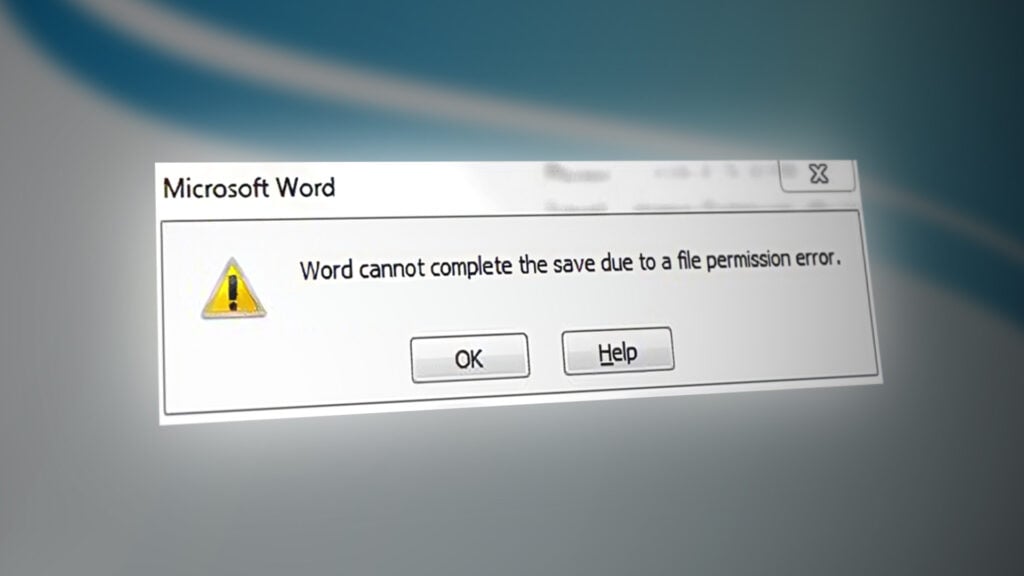How to Fix “Word Cannot Complete the Save” Permission Error?
When you see the “Word Cannot Complete the Save” permission error, it means Word can’t save the document. This happens because Word doesn’t have the right permissions to change the file or the folder where it’s kept. The most common reason is that the user doesn’t have enough permissions, especially if the file is on a network drive or shared folder.

Other reasons could be antivirus interference, broken Office add-ins, or the file being open in another program.
In this article, we will discuss different ways to solve this problem.
1. Save the document with a different name
Renaming the document makes Word create a new file, skipping the original file’s permission or access problems. This helps avoid locked file issues or system limits, allowing Word to save the document easily.
- Click on File and select Save As.

- Choose a location and change the file name. You can add a number in front or use a completely new name.

- The file will be saved immediately, and the original file will remain unchanged. Ensure you save the file to your local computer, like the Desktop, instead of removable devices.
2. Disable Antivirus Software
Antivirus software can sometimes stop Word from saving files by mistakenly identifying normal processes as threats. Temporarily turning off the antivirus can help determine if it’s causing the problem.
You can check our article on How to Turn Your Antivirus Off.
3. Check in Safe Mode
Running Word in Safe Mode turns off all add-ons and custom settings, so Word runs in its basic form. If the problem doesn’t happen in Safe Mode, it’s likely that third-party add-ons or messed-up settings are causing the issue.
- Press Windows + R, type “winword /safe” in the dialogue box, and press Enter.

- Microsoft Word will open in Safe Mode. Click on File > Open, and navigate to the file you want to open or edit.

- Make your changes and try saving. If it saves correctly, the issue might be with your add-ins or a corrupt user profile.
- To disable add-ins, click on File > Options > Add-ins and click Go next to COM Add-ins.

- All add-ins will be listed. Disable them one by one and restart Word. Check if the error disappears. This will help identify any problematic add-in. If none are causing issues, create a new user profile on your computer and try editing and saving the document again.
Check our article on How to Create a New User Account and Transfer all the Data to it.
4. Take Ownership of the File
Taking ownership of a file gives you full control, letting you get past blocks that stop you from saving or changing the document. This is important when file permissions are set wrong, usually after moving files or using them over a network, and it helps fix save problems by changing access rights.

You can follow the steps listed in our article Fix: Can’t Delete folder on Windows 10. You can replicate those steps for your Word document; the ownership process is the same whether you are taking ownership of a folder or a file.
5. Update Windows and Microsoft Word
If none of the solutions work, updating Windows and Microsoft Word might fix the problem. Updates fix bugs, improve compatibility, and enhance security, which can solve permission errors. Keeping both systems updated reduces the chances of old components causing file-saving problems since newer updates often include fixes.
- Press Windows + S, type “update” in the search box, and open the Settings application.
- In Settings, click on Check for Updates.

- Your computer will connect to Microsoft servers to check for available updates. Once all updates (including Windows and Microsoft Office) are installed, restart your computer and see if the error is resolved.





